When it comes to a country as big and beautiful as China, deciding which places to go can be a daunting task for travelers. Luckily, UNESCO has done some great research for you. Here is a list of some of China's most breathtaking World Natural Heritage Sites.
Hoh Xil
Freshly added to the list, Qinghai Hoh Xil is in the northwestern part of the Qinghai-Tibet Plateau. As the world's largest, highest and youngest plateau, it hosts many endemic species and is home to more than 230 species of wild animals, including the wild yak, wild donkey, white-lip deer, brown bear and the endangered Tibetan antelope.

A Tibetan antelope in Hoh Xil, northwest China's Qinghai Province (Xinhua/Wu Gang)
Huanglong /Jiuzhaigou
Both located in southwest China's Sichuan Province, the two places were declared UNESCO Word Heritage Sites in 1992. Huanglong is known for colorful pools formed by calcite deposits, its diverse forest ecosystems, waterfalls, and hotsprings. Jiuzhaigou Valley on the edge of the Qinghai-Tibet Plateau is also famous for colorful lakes, snow-capped peaks and multi-level waterfalls.
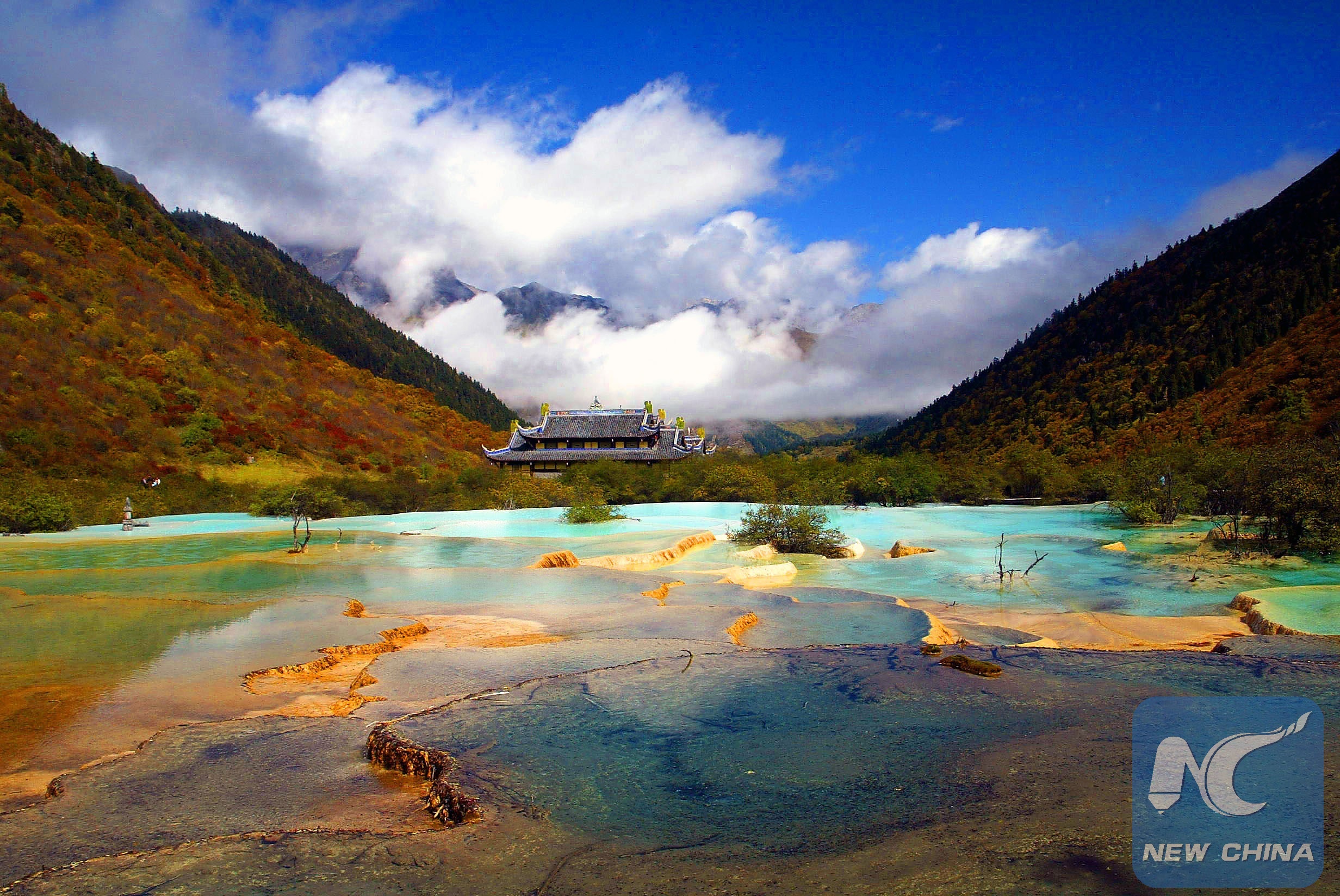
Colorful ponds in Huanglong . (Xinhua Photo/Gong Bing)
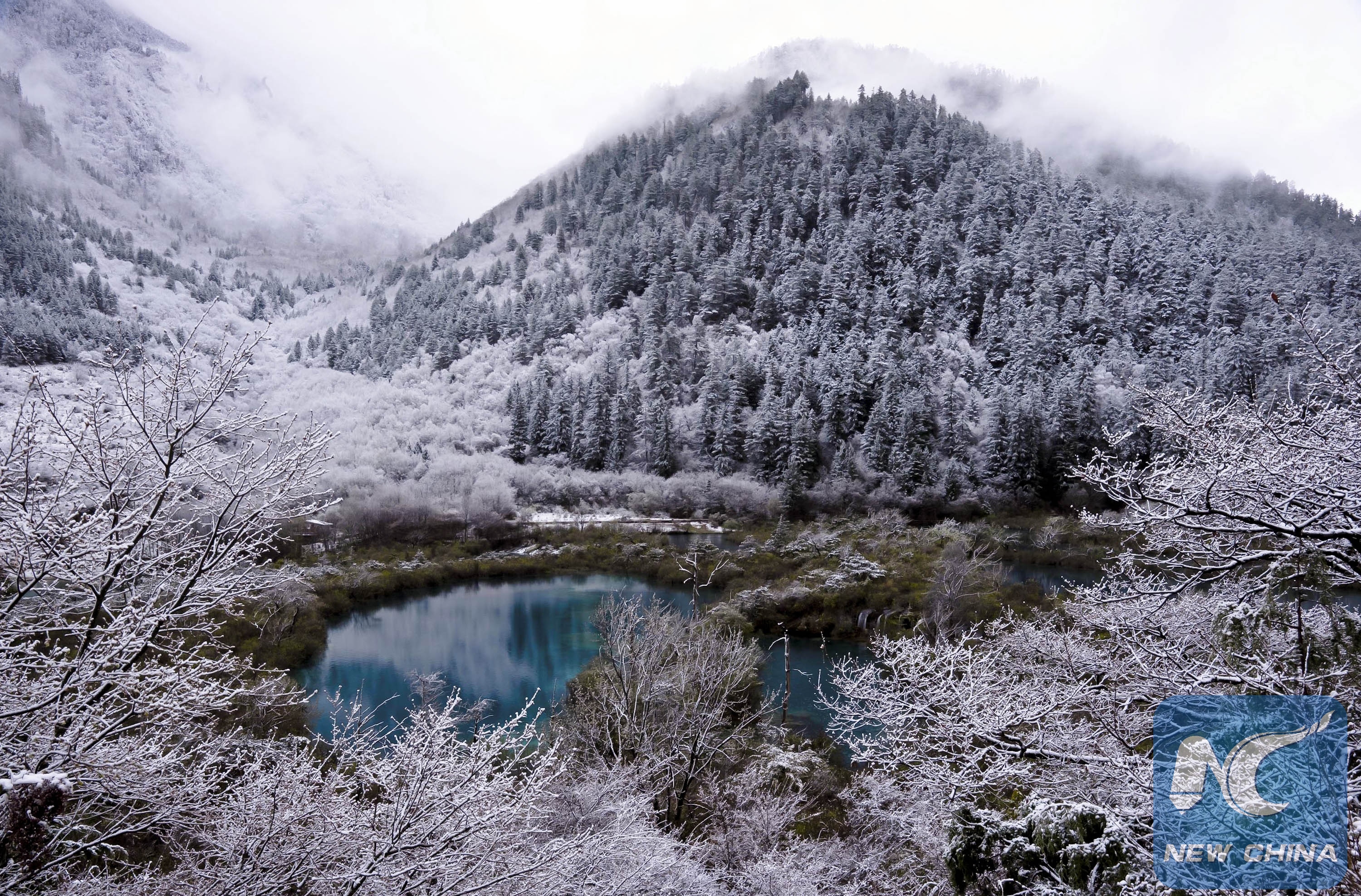
Snow-covered Jiuzhaigou Valley(Xinhua/Sangey)
Three Parallel Rivers National Park
Three Parallel Rivers National Park is in southwest China's Yunnan Province. It features sections of the upper reaches of the Yangtze, Lancang and Nujiang rivers. Here, the three of Asia's great rivers run parallel to one another, separated by high mountain ranges. UNESCO says, "the site is an epicentre of Chinese Biodiversity. It is also one of the richest temperate regions of the world in terms of biodiversity. "

Sunshine lightens the Meili Snow Mountain in Deqin County of Deqen Tibetan Autonomous Prefecture, Yunnan Province (Xinhua/Lin Yiguang)
Giant Panda Sanctuaries
Sichuan Giant Panda Sanctuaries is home to over 30 percent of the world's pandas. It has seven nature reserves and nine scenic parks in the Qionghai and Jiajin Mountains in southwest China's Sichuan Province.
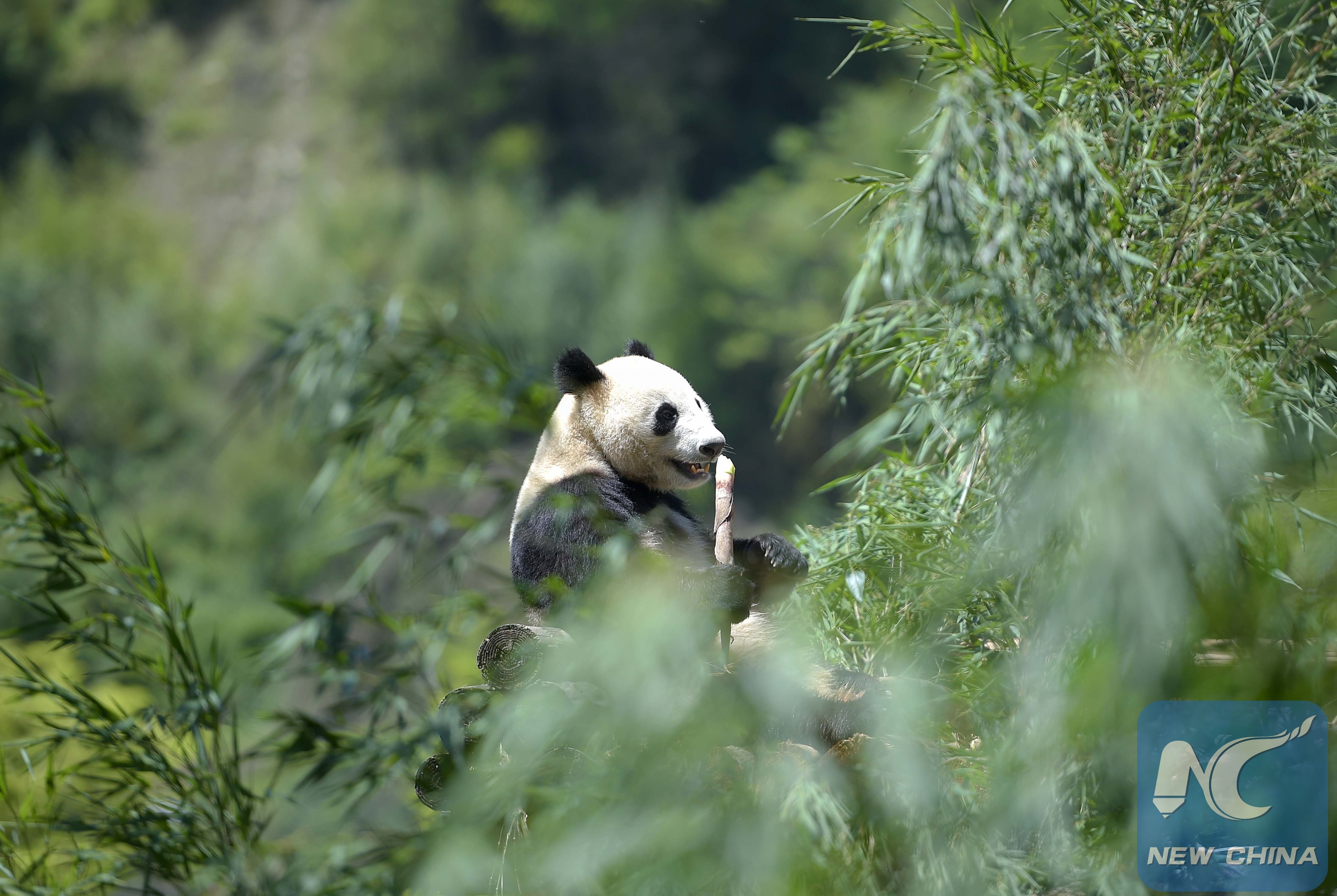 g
g
A giant panda eats food in the Wolong National Nature Reserve, southwest China's Sichuan Province (Xinhua/Xue Yubin)
South China Karst
South China Karst, a UNESCO Word Heritage site since 2007, is one of the world's most spectacular examples of humid tropical to subtropical karst landscapes. The listed site includes parts of Guizhou, Yunnan and Chongqing.

A Karst cave in Fuyuan County, southwest China's Yunnan Province (Xinhua/Yang Zongyou)
Mount Sanqingshan National Park
Mount Sanqingshan in east China's Jiangxi Province was inscribed in 2008 for its exceptional scenic quality, marked by the concentration of fantastically shaped pillars and peaks.
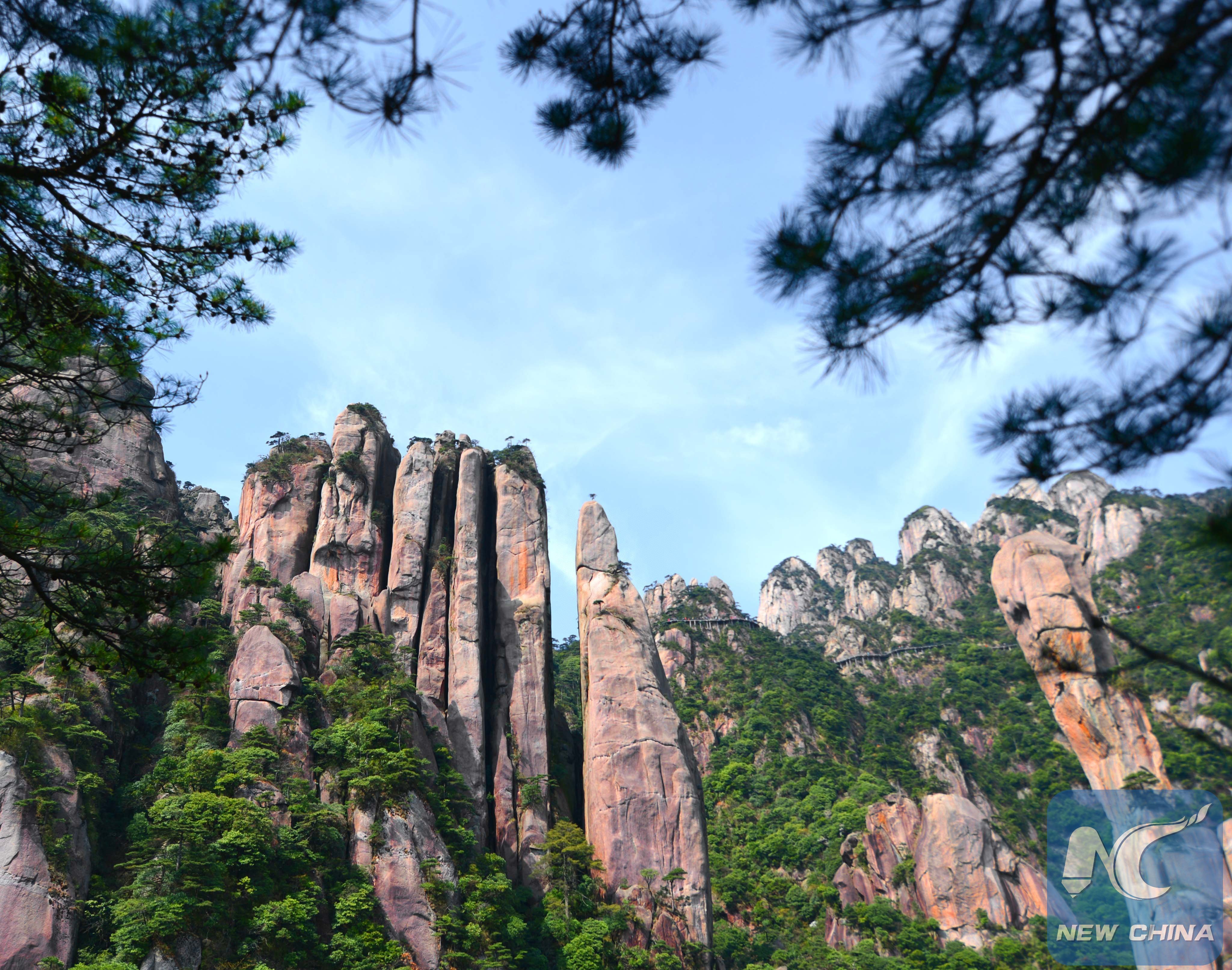
Granite peaks in Mount Sanqingshan (Xinhua/Zhou Ke)
China Danxia
China Danxia is a series of landscapes characterized by spectacular red cliffs and a range of erosional landforms, including dramatic natural pillars, towers, ravines, valleys and waterfalls. The site was inscribed in 2010 and comprises six areas found in the subtropical zone of south and southwest China.
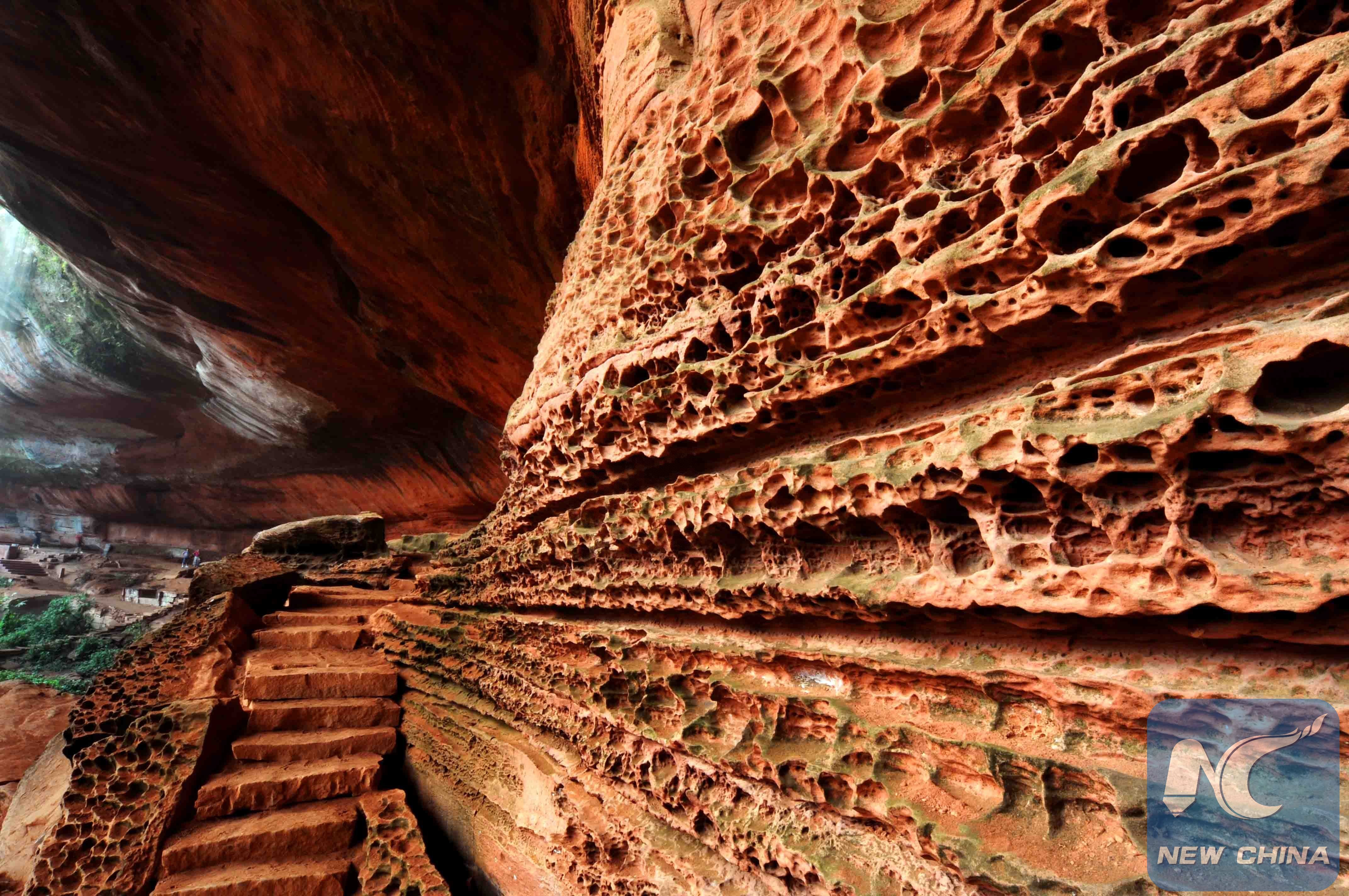
Danxia Landform in Chishui, southwest China's Guizhou Province (Xinhua)
Xinjiang Tianshan
Xinjiang Tianshan is part of the Tianshan mountain system, one of the largest mountain ranges in the world. It features spectacular snow and snowy mountains, undisturbed forests, clear rivers and red bed canyons, which are in sharp contrast with the vast adjacent desert landscape.

The Sayram Lake in Huocheng County at the foot of Tianshan Mountains, northwest China's Xinjiang Uygur Autonomous Region (Xinhua)
Hubei Shennongjia
Located in central China's Hubei Province, Shennongjia has the largest primary forests remaining in central China and provides habitat for many rare animal species including the Golden Monkeys and the Clouded Leopards.
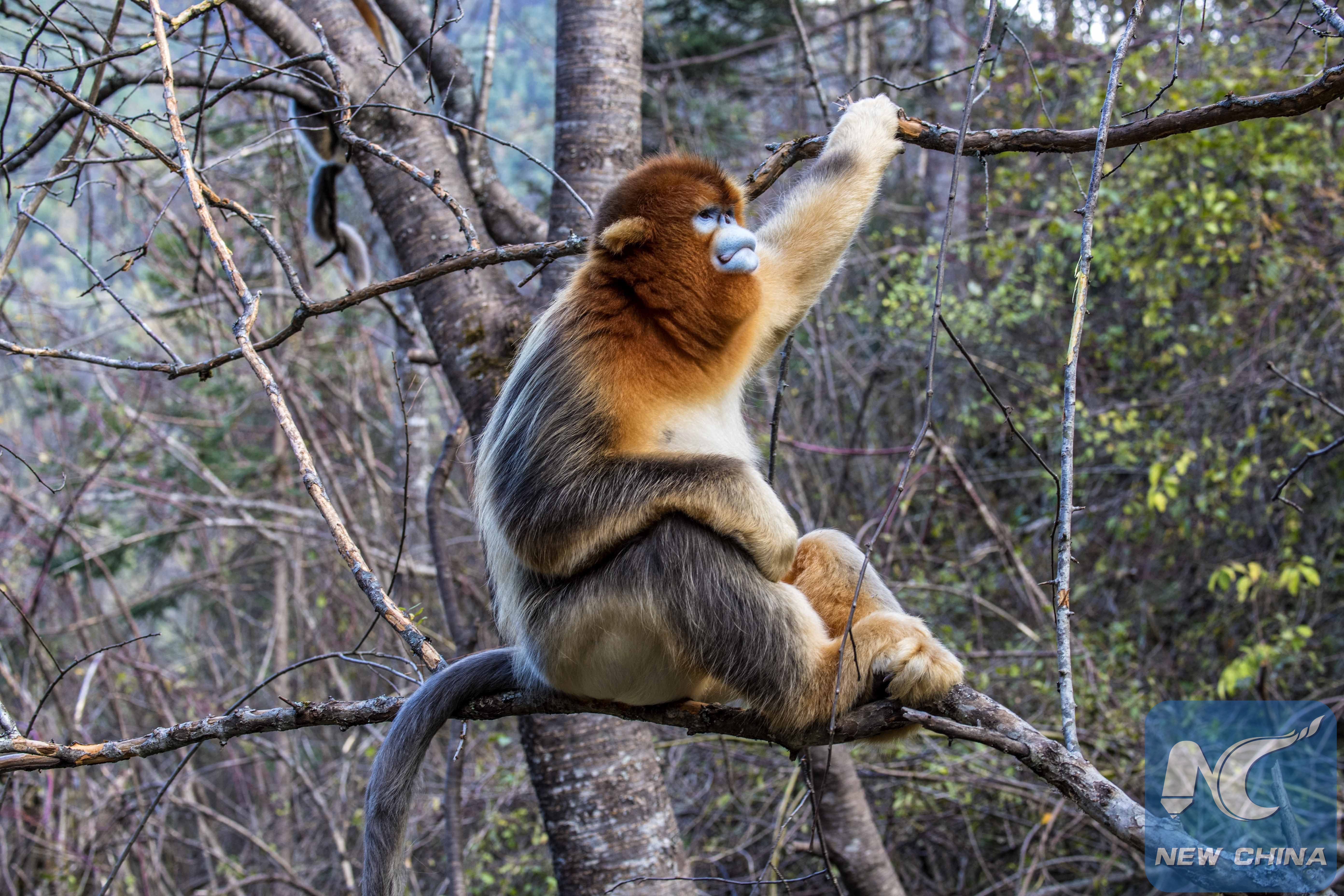
A golden monkey sits in the trees in Shennongjia, Hubei Province (Xinhua/Du Huaju)

